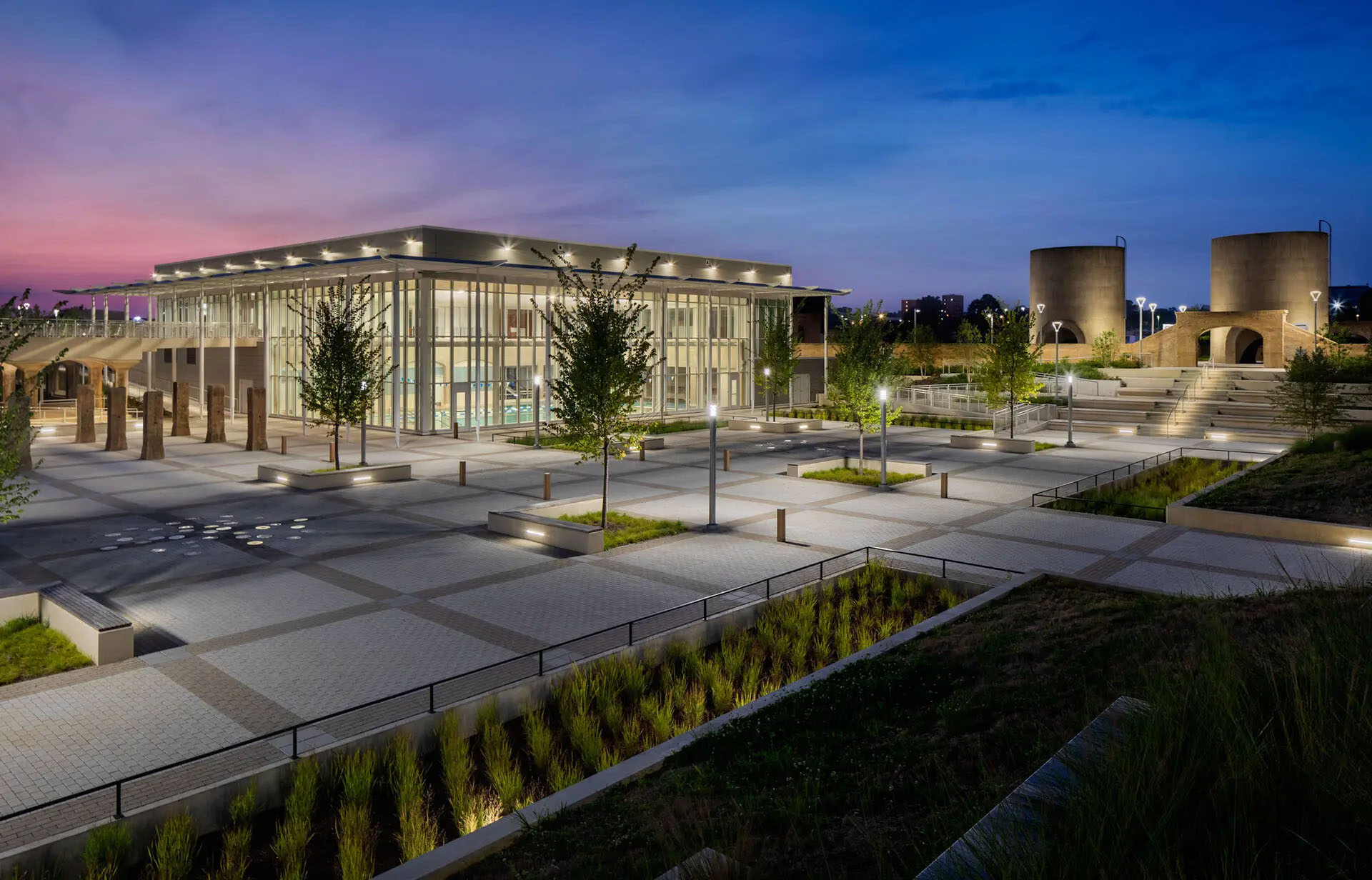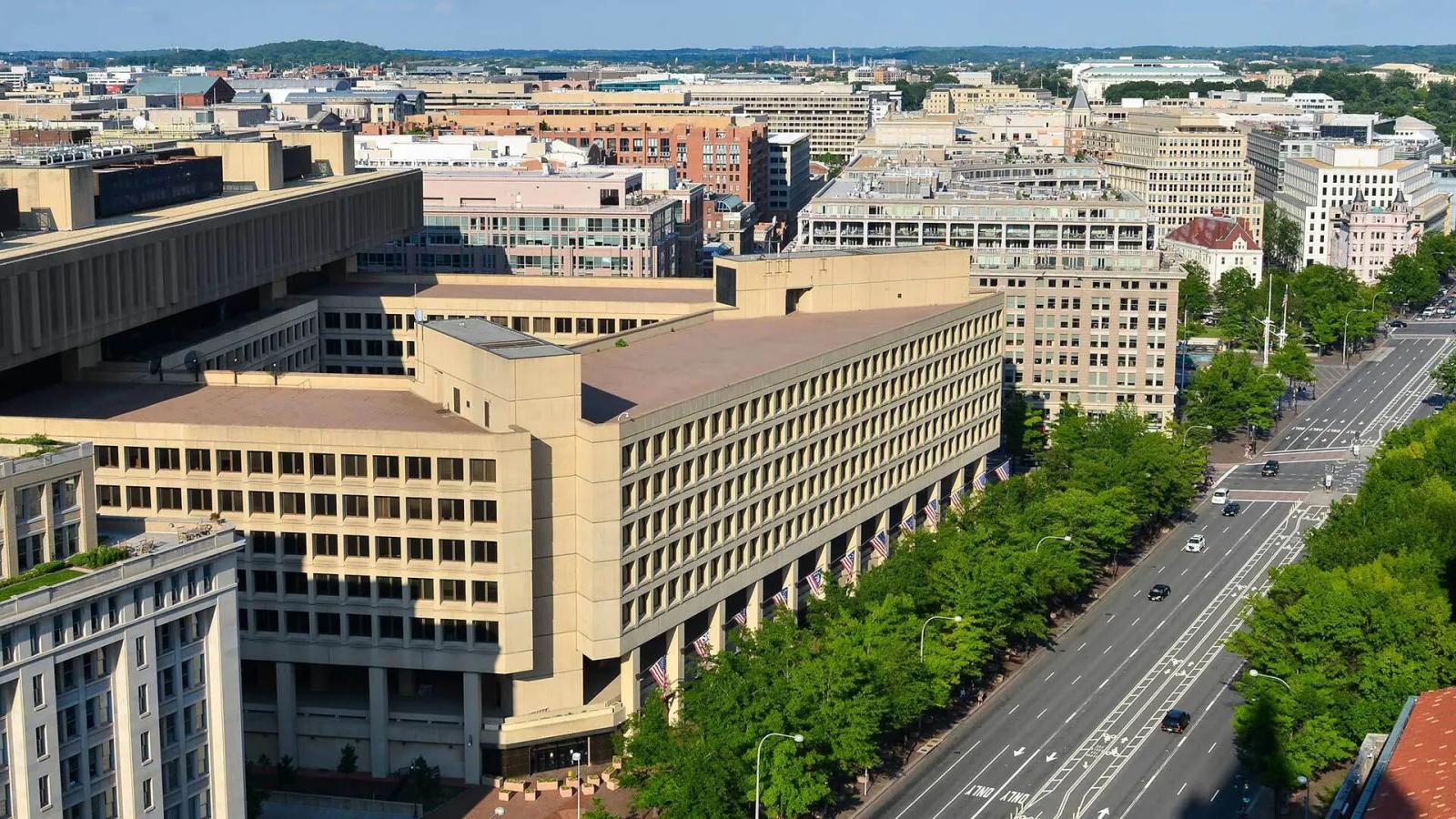The FBI Headquarters fits into the urban fabric of Washington, D.C., like a rayon leisure suit in a collection of silk blouses. The bleak, blocky building in the brutalist style (sideburns-era, all-concrete), nestled among its neoclassical counterparts on Pennsylvania Avenue, is a low-rise low point in the architectural annals of a monumental city.
When the FBI relocates to Maryland in 2036, however, the building site could have a second life, said University of Maryland architecture Professor Matthew Bell.
“It’s a real 1970s period piece,” he chuckled, of the 1.7-million-square-foot property. “But it could be mixed-use, residential or entertainment and add new public space to the inventory of great places in that part of the city.”
For the past 30 years, Bell has devised new possibilities for the nation’s changing capital as a principal of the global design firm Perkins Eastman. His projects—which range from D.C. schools and libraries to master plans for university campuses and city neighborhoods—have helped enliven communities across the District. Alongside UMD alums Christian Calleri M.Arch. ‘01 and Bhavi Venkitaraman M.Arch., M.C.P. ‘21, Bell’s team most recently proposed a new concept plan to the National Planning Commission for the tangled web of freeways around the Kennedy Center.

Many of his efforts have involved transforming federal sites into places that offer significant benefits to city residents. For example, Bell’s vision for the former McMillan Reservoir Site stands to become D.C.’s newest mixed-use urban district and opened its first phase last June.
The FBI building was one of several government sites Bell spoke about earlier this month at a summit hosted by D.C. Mayor Muriel Bowser on the economic landscape of Washington, as the city grapples with demographic changes and rising housing costs. Similar to the vision for McMillan, the secret to drawing more people into the city is to rethink how we use its space, said Bell—this time, large-occupancy government buildings that are now “fed deserts” as more employees choose to work from home.
“Cities are always changing,” said Bell. “Sometimes it's incremental, but other times it's in a big bang sort of way, and that’s what happened to D.C. with COVID. The new ‘work from home’ world has hurt D.C. in terms of tax revenue supported, in part, by the federal workforce, but could have significant other benefits, particularly if we look at underutilized federal properties downtown.”
Disposing of federal properties for other uses isn’t a new phenomena—the Old Post Office-turned-hotel is an example—but the increasingly empty (and aging) federal office space located in prime areas of the city could prompt the General Services Administration to rethink its portfolio. Aside from the massive cost of renovating some of these properties, transforming these huge pieces of government real estate, said Bell, can shift D.C. from “single” use spaces—such as office districts that are deserted at night—to cohesive and connected neighborhoods that offer housing, activity, green space and civic life.
“Rethinking these buildings and the places they reside in is the next evolution for the city,” said Bell. “And it has the possibility to transform neighborhoods, lower housing costs and bring significant assets particularly to downtown.”
Below, Bell shares four government buildings that D.C. should rethink for a more vibrant capital:
The J. Edgar Hoover Building, FBI Headquarters: With its Pennsylvania Avenue address, sprawling footprint and proximity to the theater district and Chinatown, the current home of the G-men (and -women) has plenty of possibilities, said Bell. “The Anthem is a concert venue surrounded by residential and retail,” he said. “The site is over five acres and could easily host a similar entertainment destination there if the market could support it.”
The Perkins Building, Department of Labor: Located at the corner of Constitution Avenue and 3rd Street just steps from the National Mall and U.S. Capitol, the squat 1970s building could “work” an estimated 1,500 residential units into the downtown landscape. Younger demographics drawn to D.C.’s burgeoning restaurant scene, federal green space and walkability aren’t looking for a house with a yard like previous generations, said Bell. “They just don’t want that kind of space. They want to be near a lot of amenities that they use on a regular basis.”
The James V. Forrestal Building, Department of Energy: Nicknamed the “Little Pentagon” for its original tenant—the Department of the Navy—the site is three squat brutalist buildings in Northwest Washington that block a visual connection along 10th Street between the new Wharf development and the National Mall. At almost 11 acres, the site could easily accommodate housing and office space, eliminating the “no human zone after 5 p.m. feel” of Independence Avenue, said Bell. “It’s the best opportunity in that part of the city.”
The General Accountability Office: At 6.4 acres, it’s a huge piece of real estate not often noticed in the heart of Gallery Place just north of the National Building Museum, and yet is sparsely occupied today. Redevelopment of this site could bring as many as 1,200 residential units along with amenities that could complement other attractions in the neighborhood.

